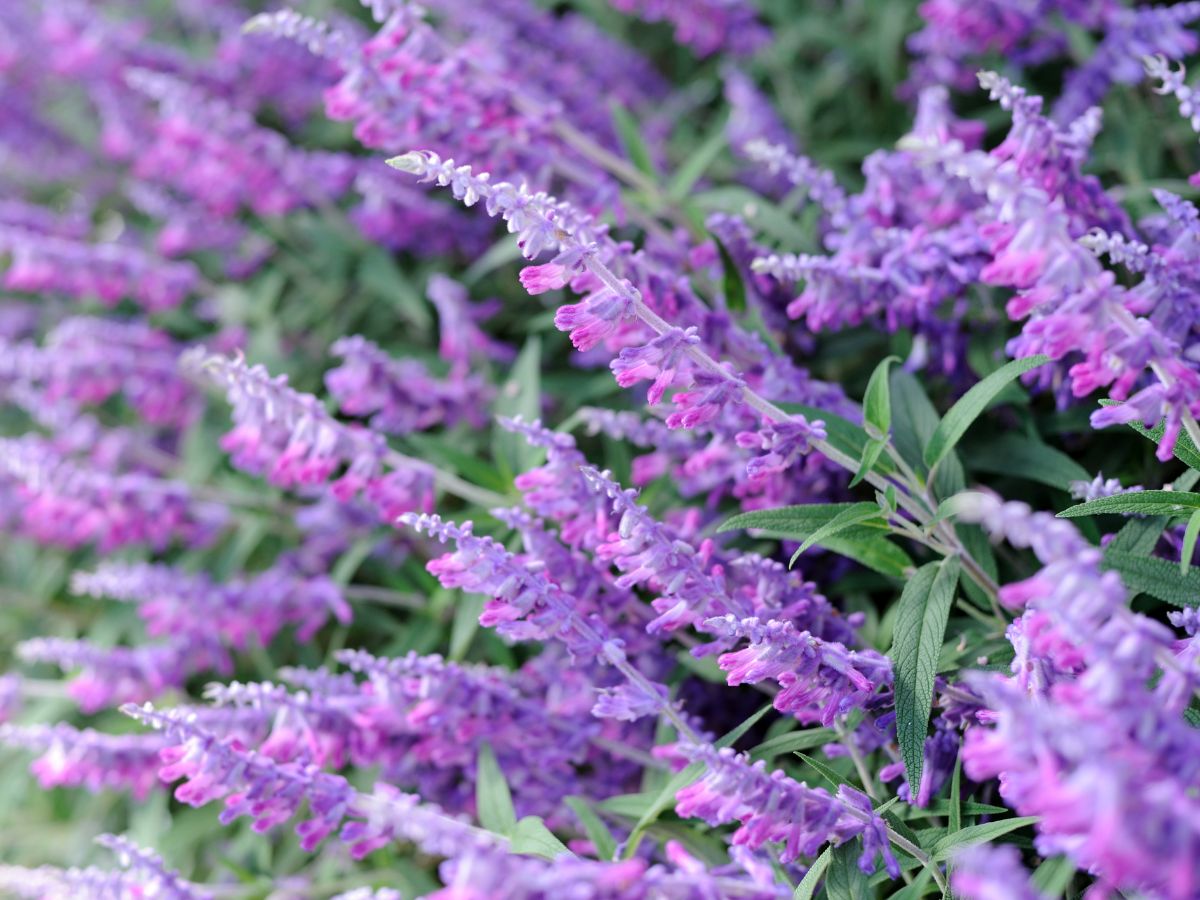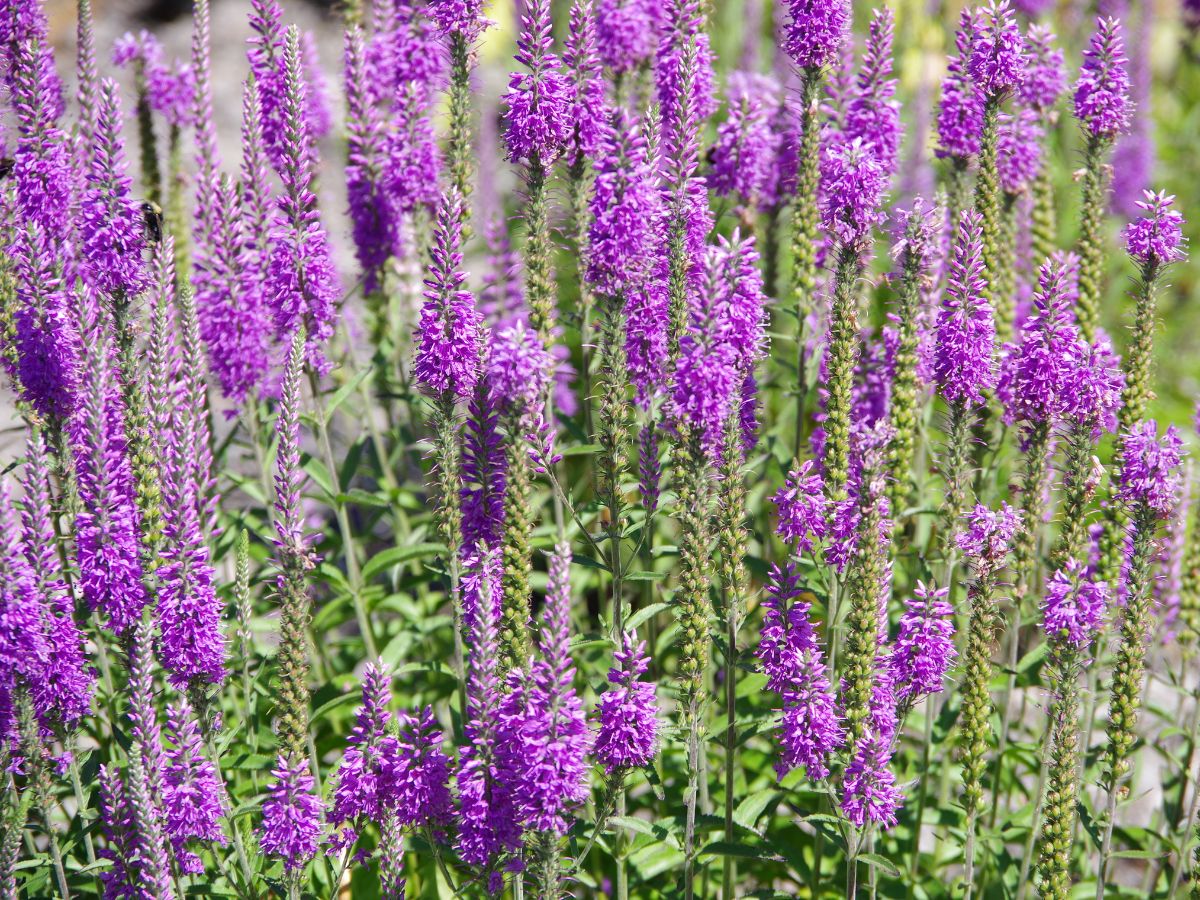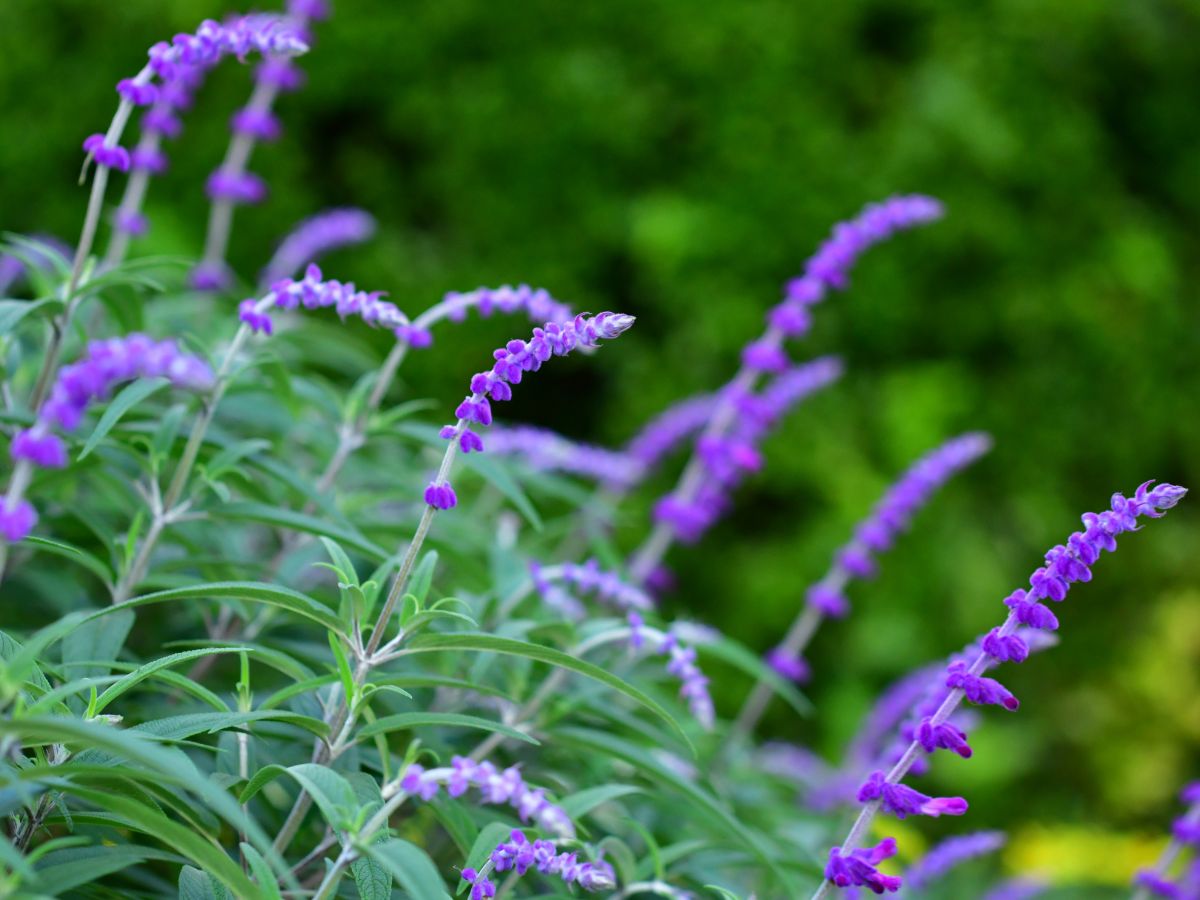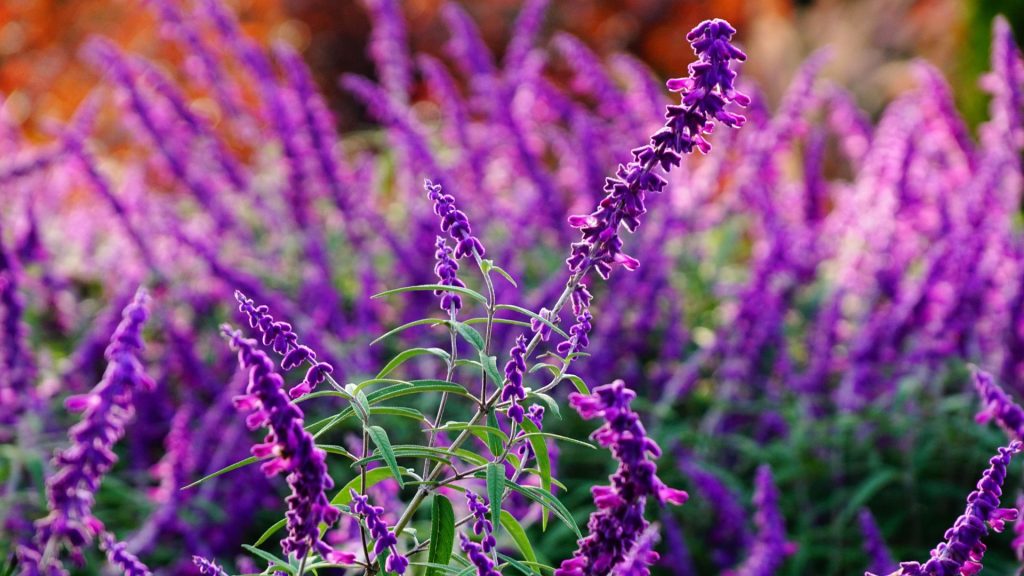Mexican sage (Salvia leucantha) is an evergreen shrub that is decorative and medicinal at the same time. It is also often used as a spice. In nature, representatives of a large genus can be found on almost every continent, and salvia is grown in many countries around the world.
The height of the Mexican bush sage, depending on the species, is about 10-27 ft. Branched tetrahedral stems of the bush are covered with numerous longitudinal-oval or lanceolate leaves, often pubescent on both sides. Fragrant Mexican sage flowers are collected in apical inflorescence and can be of different shapes and colors: red, lilac, blue, yellow, lilac, white, or pink.
In addition to medicinal and culinary value, some types of culture have high decorative qualities and are ideal for creating bright summer beds, rockery, herb gardens, mixed flower beds in the Mediterranean style, especially in combination with lavender, basil, monarda, hyssop.
Hardiness
Mexican bush sage is hardy to USDA zones 7b-10, the plant can also be grown as an annual in regions outside its hardiness range.
When Does Mexican Sage Bloom?
Some varieties bloom from spring to late summer, and decorative varieties until the first frost. Garden varieties of thermophilic salvia are grown as annuals.
Mexican Sage Varieties

The genus Salvia, belonging to the Lamiaceae family, consists of a huge number of species – about 900, which is why it is considered one of the most common. We want to tell you about the most popular types that leave no one indifferent.
- Salvia leucantha ‘Midnight’ is characterized by long, rich purple tubular flowers that emerge from velvety purple cups to form long, upright or slightly curved flower spikes, usually in late summer and fall (and spring if protected from freezing).
- Salvia azurea. The delicate blue inflorescence of the Mexican blue sage amazes with its many small flowers. Flowering begins in July and lasts until October, making the species especially popular. Among the varieties, there is a large-flowered variety.
- Salvia verticillata ‘Purple Rain’. An exceptionally beautiful decorative cold-resistant plant with bright purple flowers. Blooms almost the whole summer – from early July until September.
- Mexican Bush Sage ‘White Mischief’. This Mexican sage plant forms a huge shrub 4 feet high and 8 feet wide in one season when planted in fertile soils. The upper stems of fluffy white flowers almost cover the narrow green leaves, blooming in late September.
Mexican Bush Sage Care
Watering
Regular watering of Mexican Salvia is not required, and in the season with the usual amount and frequency of precipitation, it almost does not need additional soil moisture, since one of the main characteristics of this crop is drought resistant. But sometimes in summer, abnormally hot and dry weather sets in, and if such a period drags on, salvia needs to be watered in the evenings with water heated in the sun. The next day, after watering or rain, you need to carefully loosen the soil on the site and remove the weeds.
Top Dressing
As for fertilizers, they are applied twice: in the seedling period between the first and second picking and after planting in the ground, when the plant begins to form buds. Mineral complexes are used as fertilizers, and the concentration of the solution in the first feeding should be two times weaker than what is suggested in the instructions.

Lighting
All salvias grow well in full sun, except some species. Some species of Salvia with large leaves grow well and bloom in partial shade, therefore, when choosing a place for planting, you can stop where the plant would be in the shade for several hours a day. Mexican sage, growing in partial shade, tolerates drought better. Such a position does not affect flowering, but at the same time the risk of disease damage to the plant increases.
The Soil
Salvias grow best in moderately acid to slightly alkaline soil, ranging from 5.5 to 6.5 on the pH scale. For all types of salvia, the soil must contain lime! It is necessary to plant them in the soil only very well-drained, light, and relatively rich in humus to avoid plant diseases.
Pruning
Periodic pruning is an essential part of the care of this plant. All types of Mexican sage require formative pruning in the spring. Such pruning prevents the plants from stretching. How to trim Mexican sage to stimulate its growth? For this, it is important to cut off the wilted parts and shorten the green stems. This would stimulate the growth of new shoots. At the end of the season, you should mulch plants with quality garden compost.
With salvias with root rosettes, it is enough to simply cut off the stems after flowering, and the rosette must be covered with compost, as this promotes the formation of new root shoots.
Possible Problems with Mexican Sage

Of the diseases for sage, the most dangerous is mold, which can occur due to excessive thickening of the bush. To deal with this, the plants should be thinned a little to ensure better air circulation. This is especially significant on hot summer days. To reduce the amount of moisture under the bush, it would be good to lay out the space around with small stones – water evaporates faster from their surface, and the excess goes into the soil.
As for pests, sometimes the plant is affected by whiteflies, thrips, aphids, or mites, as well as slugs and snails, which devour the delicate foliage of salvia. Snails and slugs can be collected by hand, and insects would have to be dealt with insecticides that match each of the pests.
Why Is My Mexican Sage Not Blooming
As we said above, Mexican bush sage can tolerate a little shade, but the colossal lack of light can lead to long-legged plants that would not bloom very much. Provide the plant with extra watering on hot summer days, it may grow faster and bloom more. However, poor drainage or over-watering can even kill the plant. Be sure to keep track of how much water you give your salvia.
Propagating
You can easily propagate Mexican bush sage with seeds, cuttings, and air layers.
Growing Mexican Bush Sage from Seeds
You can sow seeds directly into open soil, before winter or early spring. But this method is not very reliable – the seeds may not sprout, and there is also a possibility of death of young shoots from the cold. Therefore, it is better to choose the seedling method. The procedure should be carried out in the last days of February-early March, in this case, the plant may bloom in early summer. Although hybrid varieties can bloom earlier.
Seeds of Mexican sage are spread over the surface of moistened nutrient soil, sprinkled with earth a little on top. Sprinkle them with water and cover the container with seed with paper or glass. The optimum temperature for seedlings is 68-77 °F. Adequate lighting and moderate humidity should also be provided for seed germination. When 3-4 leaves appear, pinch the tops of the shoots.
Salvia seedlings are planted on the site as soon as the spring frosts stop. This usually occurs in early June. The site for planting is chosen sunny, with light nutritious soil, the distance between the prepared holes should be at least 7-8 inches.
Propagation of Salvia by Cuttings

In this way, a new plant can only be obtained from perennial plant species. Breeding can be carried out throughout the season. To do this, cut the cuttings about 5-6 inches long. They need to be rooted in a container with water, shaded from sunlight. The presence of special growth stimulants in the water is a big advantage. Take settled, filtered, or boiled water. Usual tap water contains high levels of chlorine and can cause viral diseases. The first roots may appear after 2 weeks, and you can plant cuttings in the open ground a week after rooting.
Propagation of Salvia by Air Layers
Salvia reproduces easily with air layers. To do this, simply press the branch to the ground, make a small cut and sprinkle it with garden soil. In this position, secure the branch with an iron clip. New roots should appear within a few months. After the appearance of the rhizome, sage is transplanted to another place and separated from the mother plant.
Use of Mexican Sage
Dry leaves of Mexican sage are used to prepare tinctures that help fight diseases such as tonsillitis, gastritis, bronchitis, kidney disease, and gum disease. Sage has the unique ability to stop bleeding, soothe toothache. It can alleviate the course of fungal skin infections and psoriasis. Sage has an anti-inflammatory, emollient, disinfectant, hemostatic, diuretic, sweating-reducing effect. Decoctions and infusions of sage leaves and flowers are effective for colds accompanied by fever, helping to lower the temperature and relieve inflammation in sore throats, acute respiratory infections, and flu.
Before using, we strongly recommend that you consult with your doctor, since despite the miraculous properties of sage, it, like any other drug, has contraindications. Mexican sage is not difficult to grow, there are many options for creating flower arrangements with its participation. The flower looks good both in single plantings and in a friendly company with many flowers, such as marigolds, cineraria, and lobelia. The plant can even participate in the creation of multi-level flower beds since the varieties have different heights of bushes. And not every plant can boast of such a wide range of various medicinal properties!


